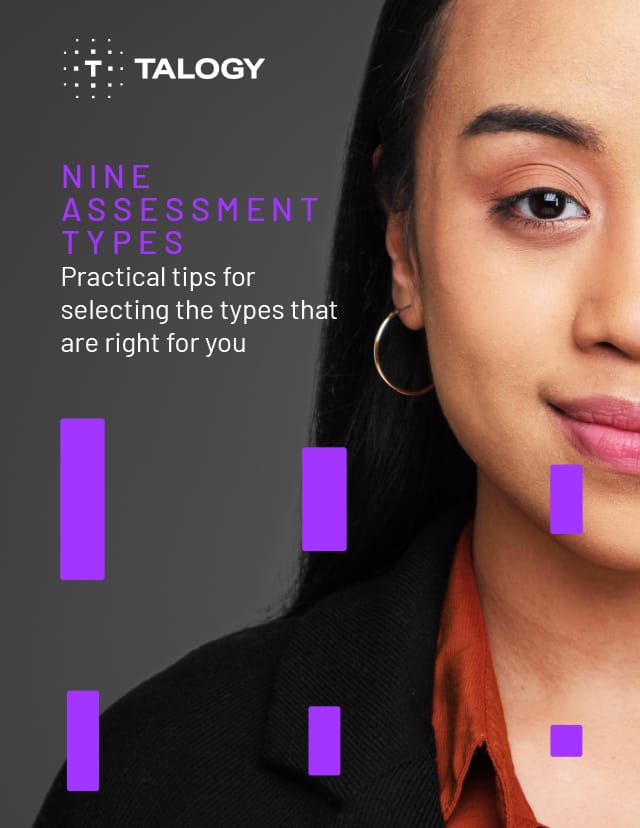Written by Alanna Harrington, Senior Research Consultant
Many of us have been on the receiving end of the negative side of ‘culture fit.’ The recruiter calls and tells you how wonderful it was to meet you, that everyone on the team really liked you, and that your skills are a great match for the role. But … they’ve gone with another candidate who is a better culture fit. Culture fit is a vague and nebulous term used in recruiting across industries, even in sports, where, for example, the New England Patriots place a big emphasis on culture fit when making trades.
So, what exactly is culture fit? Is it just a polite-sounding excuse that really means ‘we didn’t like you’ or ‘you’re not the same as the rest of us’? Or a legitimately useful criterion for hiring? Many argue that it is the former and that it should be discarded from hiring processes as it could be harmful to diversity or lead to groupthink.
At Talogy, our somewhat controversial take is that culture fit is not dead, and the current backlash stems from misuse of the term both in media and in practice.
Defined correctly, culture fit is the extent to which an employee or potential employee aligns with the culture of the organization. Culture includes the organization’s vision, values, and norms. Culture fit does not mean that everyone must have the same personality, skills, and experience. There are a lot of benefits of culture fit, with research indicating that organizations where there is a high level of alignment on values and priorities are more cohesive and likely to experience higher employee engagement and commitment as well as better retention.
The trouble with culture fit in hiring is that people are not very good at evaluating another person’s culture fit. Research has shown that interviewers are often inaccurate in their judgement of fit and tend to base their judgement on how similar the candidate is to themselves. When used in this subjective manner, culture fit absolutely can be a threat to diversity.
So, what should you do instead? Here are our top pieces of advice for using culture fit in a fair and objective manner in your hiring process:
- Have a clear definition and consensus of what your culture is
- If your culture isn’t inclusive, take action to address this
- Measure culture fit in an objective way that removes or reduces human biases
- Enable your applicants to form an accurate perception of their own fit by giving them a realistic preview of both the job and the organization
- Use culture fit not in isolation, but in combination with other valid predictors of job performance
To understand what your organization’s culture and values are, you could conduct a survey with current employees or conduct focus groups with a neutral facilitator. As culture is often driven by leaders, interviews with senior leadership that explore the organization’s mission, purpose, and vision can also help to define the culture.
When a culture isn’t truly inclusive, hiring culture fit can become problematic. An inclusive culture is one where a diverse workforce enjoys effectively and harmoniously working together and each employee feels like a valued member of the team. Building an inclusive culture takes time, but it’s worth taking a step back to address major challenges to inclusion before placing a focus on culture in your hiring. Once a groundwork is laid, hiring people who prioritize inclusivity can help to bolster your inclusive culture further.
As mentioned, humans don’t do a great job of determining the culture fit of others. Limit biased judgement wherever possible. For example, consider implementing an objective assessment of values in the early stages of your hiring process. If you want to hit on culture fit again, a structured interview with clear success criteria will help to reduce bias.
The mistake a lot of organizations make is treating culture fit as if it is a one-way street. However, during the hiring process, applicants are forming their own perceptions of the organization’s attractiveness and their fit to its culture. Research has shown that unlike interviewers, applicants’ judgements of fit are based on the alignment of values more so than demographic similarity. Make it a priority to give applicants a realistic understanding not only of the job they will be doing, but of the culture and values of the organization so they can form an accurate perception.
Culture fit is most likely to link to outcomes such as higher engagement and commitment, and subsequently, an intention to stay with the organization. It is not as likely to have a direct relationship with job performance; therefore, it is important to assess other job-relevant criteria in your hiring process that will be predictive of performance, such as key skills and competencies. This will also increase the overall fairness of your process.


